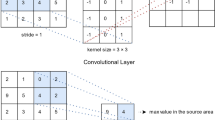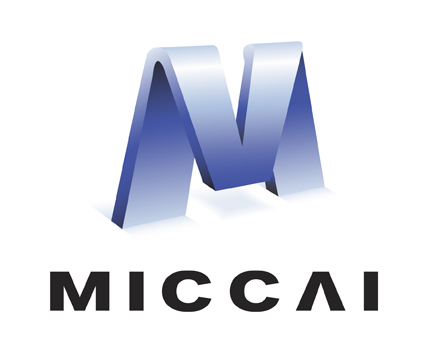Abstract
CAD is an emerging field, but most models are not equipped to handle missing and noisy data in real-world medical scenarios, particularly in the case of rare tumors like pancreatic neuroendocrine neoplasms (pNENs). Multi-label models meet the needs of real-world study, but current methods do not consider the issue of missing and noisy labels. This study introduces a multi-label model called Self-feedback Transformer (SFT) that utilizes a transformer to model the relationships between labels and images, and uses a ingenious self-feedback strategy to improve label utilization. We evaluated SFT on 11 clinical tasks using a real-world dataset of pNENs and achieved higher performance than other state-of-the-art multi-label models with mAUCs of 0.68 and 0.76 on internal and external datasets, respectively. Our model has four inference modes that utilize self-feedback and expert assistance to further increase mAUCs to 0.72 and 0.82 on internal and external datasets, respectively, while maintaining good performance even with input label noise ratios up to 40% in expert-assisted mode.
M. Wang, Y. Li and B. Huang—Contributed equally to this work.
Access this chapter
Tax calculation will be finalised at checkout
Purchases are for personal use only
Similar content being viewed by others
References
Carion, N., Massa, F., Synnaeve, G., Usunier, N., Kirillov, A., Zagoruyko, S.: End-to-end object detection with transformers. In: Vedaldi, A., Bischof, H., Brox, T., Frahm, J.-M. (eds.) ECCV 2020. LNCS, vol. 12346, pp. 213–229. Springer, Cham (2020). https://doi.org/10.1007/978-3-030-58452-8_13
Chen, B., Li, J., Lu, G., Yu, H., Zhang, D.: Label co-occurrence learning with graph convolutional networks for multi-label chest x-ray image classification. IEEE J. Biomed. Health Inform. 24(8), 2292–2302 (2020)
Choi, H., Ha, S., Kang, H., Lee, H., Lee, D.S., Initiative, A.D.N., et al.: Deep learning only by normal brain pet identify unheralded brain anomalies. EBioMedicine 43, 447–453 (2019)
Dosovitskiy, A., et al.: An image is worth 16x16 words: transformers for image recognition at scale. arXiv preprint arXiv:2010.11929 (2020)
Eweje, F.R., et al.: Deep learning for classification of bone lesions on routine MRI. EBioMedicine 68, 103402 (2021)
Jiang, Y., et al.: Development and validation of a deep learning CT signature to predict survival and chemotherapy benefit in gastric cancer: a multicenter, retrospective study. Ann. Surg. 274(6), e1153–e1161 (2021)
Kendall, A., Gal, Y., Cipolla, R.: Multi-task learning using uncertainty to weigh losses for scene geometry and semantics. In: Proceedings of the IEEE Conference on Computer Vision and Pattern Recognition, pp. 7482–7491 (2018)
Lanchantin, J., Wang, T., Ordonez, V., Qi, Y.: General multi-label image classification with transformers. In: Proceedings of the IEEE/CVF Conference on Computer Vision and Pattern Recognition, pp. 16478–16488 (2021)
Lin, D., et al.: Application of comprehensive artificial intelligence retinal expert (care) system: a national real-world evidence study. Lancet Digit. Health 3(8), e486–e495 (2021)
Partelli, S., et al.: European cancer organisation essential requirements for quality cancer care (erqcc): pancreatic cancer. Cancer Treat. Rev. 99, 102208 (2021)
Penberthy, L.T., Rivera, D.R., Lund, J.L., Bruno, M.A., Meyer, A.M.: An overview of real-world data sources for oncology and considerations for research. CA: Cancer J. Clin. 72, 287–300 (2021)
Peng, S., et al.: Deep learning-based artificial intelligence model to assist thyroid nodule diagnosis and management: a multicentre diagnostic study. Lancet Digit. Health 3(4), e250–e259 (2021)
Ravizza, S., et al.: Predicting the early risk of chronic kidney disease in patients with diabetes using real-world data. Nat. Med. 25(1), 57–59 (2019)
Ridnik, T., Sharir, G., Ben-Cohen, A., Ben-Baruch, E., Noy, A.: ML-Decoder: scalable and versatile classification head. arXiv preprint arXiv:2111.12933 (2021)
Shen, S., Han, S.X., Aberle, D.R., Bui, A.A., Hsu, W.: An interpretable deep hierarchical semantic convolutional neural network for lung nodule malignancy classification. Expert Syst. Appl. 128, 84–95 (2019)
Sherman, R.E., et al.: Real-world evidence—what is it and what can it tell us? (2016)
Song, C., et al.: Predicting the recurrence risk of pancreatic neuroendocrine neoplasms after radical resection using deep learning radiomics with preoperative computed tomography images. Ann. Transl. Med. 9(10), 833 (2021)
Tai, Y., Gao, B., Li, Q., Yu, Z., Zhu, C., Chang, V.: Trustworthy and intelligent COVID-19 diagnostic IoMT through XR and deep-learning-based clinic data access. IEEE Internet Things J. 8(21), 15965–15976 (2021)
Vaswani, A., et al.: Attention is all you need. In: Advances in Neural Information Processing Systems 30 (2017)
Zhang, S., et al.: A novel interpretable computer-aided diagnosis system of thyroid nodules on ultrasound based on clinical experience. IEEE Access 8, 53223–53231 (2020)
Acknowledgements
This work was supported by National Natural Science Foundation of China (81971684), Marshall Lab of Biomedical Engineering open fund: Medical-Engineering Project.
Author information
Authors and Affiliations
Corresponding authors
Editor information
Editors and Affiliations
1 Electronic supplementary material
Below is the link to the electronic supplementary material.
Rights and permissions
Copyright information
© 2023 The Author(s), under exclusive license to Springer Nature Switzerland AG
About this paper
Cite this paper
Wang, M. et al. (2023). Self-feedback Transformer: A Multi-label Diagnostic Model for Real-World Pancreatic Neuroendocrine Neoplasms Data. In: Greenspan, H., et al. Medical Image Computing and Computer Assisted Intervention – MICCAI 2023. MICCAI 2023. Lecture Notes in Computer Science, vol 14226. Springer, Cham. https://doi.org/10.1007/978-3-031-43990-2_49
Download citation
DOI: https://doi.org/10.1007/978-3-031-43990-2_49
Published:
Publisher Name: Springer, Cham
Print ISBN: 978-3-031-43989-6
Online ISBN: 978-3-031-43990-2
eBook Packages: Computer ScienceComputer Science (R0)






